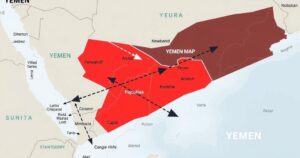Magnitude-7.6 Earthquake Prompts Tsunami Alerts Across the Caribbean

A 7.6 magnitude earthquake struck the Caribbean, causing precautionary tsunami alerts for several islands. Coastal residents were advised to move inland. Alerts were eventually lifted, with no significant damage reported. The incident highlights the importance of disaster preparedness and communication.
On Saturday, a magnitude-7.6 earthquake struck in the Caribbean Sea, approximately 130 miles south-southwest of George Town, Cayman Islands. The earthquake occurred at 6:23 p.m. local time and registered at a depth of 10 kilometers, as reported by the U.S. Geological Survey. In response, various islands and nations urged coastal residents to move inland, although tsunami alerts were later lifted in most areas.
As a precaution, the U.S. National Tsunami Warning Center issued a tsunami advisory specifically for Puerto Rico and the U.S. Virgin Islands, which was subsequently canceled. Hazard Management Cayman Islands advised residents near the coast to seek higher ground due to anticipated wave heights between 0.3 and 1 meter; however, they later announced an “all clear” on their official social media platforms.
In Puerto Rico, Governor Jenniffer González Colón stated she remained in contact with emergency services following the tsunami advisory, but she did not recommend evacuation from coastal regions. Local media reported that the alarm sounded in the northwest region prompted residents to leave, resulting in heavy traffic.
The Dominican Republic also issued a tsunami alert, suggesting residents in coastal areas relocate to altitudes of more than 20 meters and at least 2 kilometers inland, but this warning was later rescinded. Meanwhile, Honduran officials reported no immediate damage and advised residents to avoid beaches, while authorities in Cuba requested that individuals evacuate beachfront zones.
The National Oceanic and Atmospheric Administration in the United States indicated that tsunami waves could reach heights of 1 to 3 meters above normal tide levels along certain areas of the Cuban coast. Despite initial concerns, reports indicated that the situation was managed without major incidents.
On Saturday, an earthquake with a magnitude of 7.6 occurred in the Caribbean, leading to widespread alerts and precautionary measures across the region. Such seismic events frequently trigger tsunami warnings due to the potential for rapid changes in sea level. The response from local authorities reflects the importance of preparedness and communication in the face of natural disasters, as residents are advised to prioritize their safety by moving to higher ground. Seismologists regularly monitor tectonic activity, particularly in areas with dense populations and vulnerable coastlines. The U.S. Geological Survey plays a crucial role in assessing the magnitude of earthquakes and their potential impact, while national agencies, such as the National Tsunami Warning Center, are responsible for issuing timely warnings to mitigate risks to public safety.
In conclusion, the recent magnitude-7.6 earthquake in the Caribbean prompted numerous islands and territories to issue precautionary advisories regarding potential tsunami threats. Although alerts were eventually lifted, the incident underscores the importance of disaster preparedness and effective communication among local authorities and residents. Continued vigilance and adherence to guidance from emergency agencies remain critical in ensuring public safety during such natural events.
Original Source: www.wsaz.com








